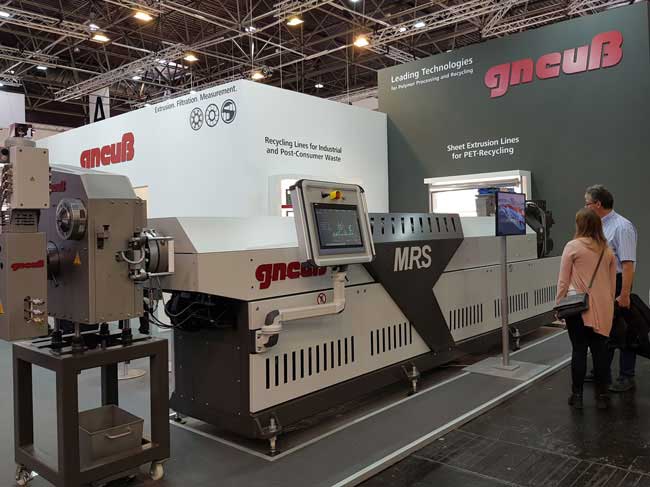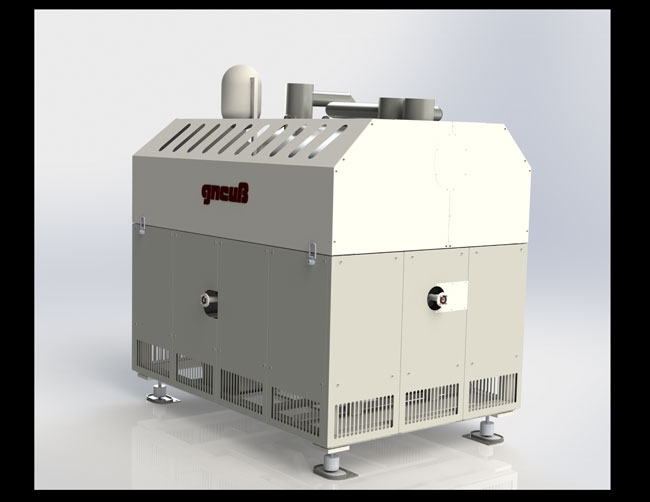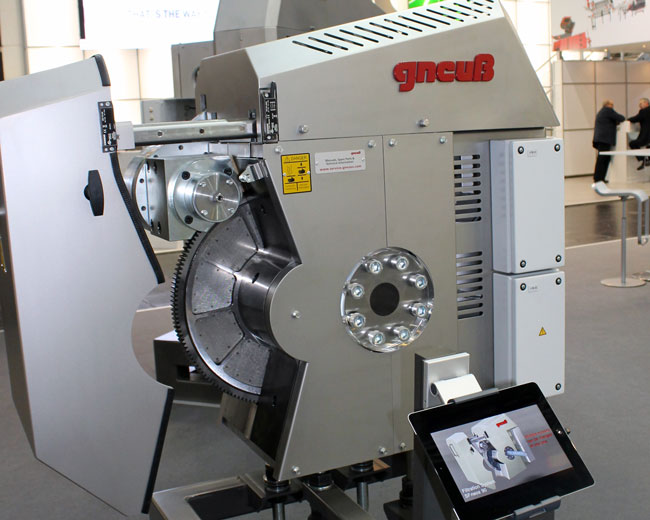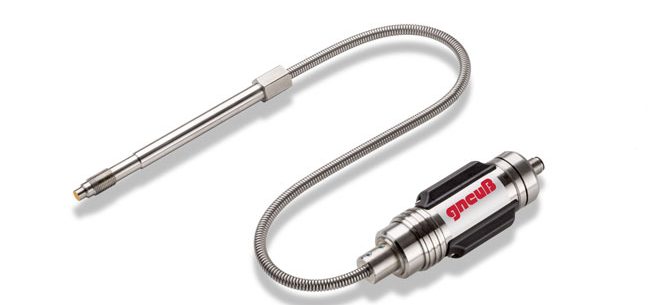GNEUSS EXTRUSION TECHNOLOGY
Second generation MRS extruder with further improved IV retention and enhanced drive design
The Gneuss Processing Unit (GPU) has been available for more than a decade now and has proven itself for the reprocessing of highly contaminated materials without pre-drying, especially bulky PET waste such as post-consumer bottle flakes and industrial waste from fiber and film manufacture as well as polystyrene, nylon and other hydrophil polymers.
Even fiber waste with a high moisture content that is heavily contaminated with preparation oils and other impurities can be fed.
A Gneuss Processing Unit consists of a Gneuss MRS extruder with its unmatched devolatilization and decontamination performance in combination with a highly-efficient Gneuss Rotary Filtration System and an online viscometer VIS for intelligent dynamic viscosity control.
The MRS extruder itself has been improved considerably over the last decade and at the Index show the second generation design will be on display. The enhanced drive design is more robust to handle even more demanding recycling environments. Thanks to several changes in the MRS drum and screw design the already unmatched IV retention has been further improved, while continuing to forgo pre-drying.
The MRS extruder permits the processing of PET without pre-drying by means of a simple water-ring vacuum system, so that the material can be used directly for the production of high-quality staple fiber and nonwoven products, also as bicomponents. This is achieved by means of its unique and patented processing section.
Based on a conventional single screw extruder, the Multi Rotation Section is a drum containing eight satellite single screws, driven by a ring gear and pinion transmission. The “barrels” cut into the drum are approximately 30 % open and provide optimum exposure of the melt.
Thanks to this design, the devolatilizing performance is approx. fifty (50!) times greater than that of a conventional vented single screw extruder – and this at a vacuum of only 25 to 40 mbar. While other dryerless technologies are promoting at least partial pre-drying in the meantime, the MRS extruder can process R-PET with up to 1 % moisture content.
By avoiding the need for a deep vacuum system and pre-drying, the MRS is an economically efficient alternative to conventional technologies. Further arguments in its favor besides energy savings are the simple and rugged design, small footprint, its ease of operation and low maintenance, processing flexibility and last but not least its excellent melt quality and homogeneity.
As a result of the excellent devolatilization performance of the MRS Technology (not only is water extracted, but also monomers, oligomers and other problematic volatiles), the melt has a narrow molecular weight distribution without low-molecular components. This leads to a reduction of breakages, specks and deposits at the spinnerets (“plate out”). A Letter of Non Objection (LNO) from the FDA, EFSA conformity and several local approvals in Latin America confirm the decontamination efficiency of this technology.

Polyreactor JUMP
The JUMP is a compact, quick and efficient alternative to conventional SSP (solid state) systems and enables direct reintroduction of the polymer into the production process without the need to remelt the PET.
The reactor is installed directly downstream of a Gneuss Processing Unit and the polymer passes over several slow turning elements which create a polymer film, the surface of which is constantly renewed. The reactor vessel is kept under vacuum, through which volatile substances are reliably removed.
By regulating the residence time in the reactor, the vacuum, the fill level and the speed of rotation of the agitating devices, the polycondensation reaction can be altered to achieve the required product properties. The JUMP is a compact, quick and efficient alternative to conventional SSP (solid state) systems and enables direct reintroduction of the polymer into the production process without the need to remelt the PET.
With the IV booster JUMP, the viscosity of polyester (PET) can be lifted to the required level for a given application.

GNEUSS FILTRATION TECHNOLOGY
New SFneos and new CSFprimus Rotary Filter
The continuous Gneuss Rotary Filtration Systems are characterized by a filter disk on which the screen cavities are located in a ring pattern. Screens can be changed on the part of the filter disk that is not active in the melt channel, while the production process continues to run without any interruptions or disturbances. Even with heavy contaminations, as they often occur in recycling and with high filter finenesses, the processing remains pressure- and process-constant.

The new model SFneos was developed to combine the charactertistics of several older models into one simple and cost-efiicient solution, offering the following advantages:
- Constant pressure guaranteed – even during screen changes
- Suitable for most types of polymers and viscosities
- Compact design thanks to an enlarged active screen area
(up to 2370 cm2) - Simple and safe handling and operation with several screens accessible for screen changes
- Very cost effective thanks to its improved design
The SFneos is the ideal filtration system for applications that benefit from a continuous, pressure and process constant screen changer, but that don’t require back-flushing.
Gneuss’ top model, the RSFgenius, operates with an integrated self cleaning system for very demanding applications and highest quality requirements. Screens can be automatically re-used up to 400 times and filtration finenesses below 10 microns/1200 mesh are available.
Gneuss also offers a new semi-continuous model, the CSFprimus. This model is used as a pre-filter, safety filter or in applications with little contamination and is characterized by a very large active screen area for its small footprint.
GNEUSS MEASUREMENT TECHNOLOGY
IO-Link melt pressure sensors for digital communication
IO-Link is a worldwide standardised technology for digital linking of sensors and actuators. Communication takes place over a point-to-point connection and is thus not a field bus. IO-Link is manufacturer-independent and is becoming more and more widespread in industrial automation engineering. Most renowned controller manufacturers offer IO-Link masters, which are either directly fitted as an assembly in the controller or installed in the field and connected via a bus system.
The traditional melt pressure sensor with an analogue output knows significantly more than just the process pressure. The signal preparation on its inside has been digitised long ago, and as a result, it is in a position to provide valuable information that simplifies maintenance, increases safety and improves availability. Preventive maintenance and condition monitoring can minimise downtimes and optimise process safety.
The Gneuss IO-Link sensor offers the possibility to access all this information. Its proven sensor technology, in combination with intelligent, digital communication not only offers monitoring of the electronics temperature, but also records the operating hours in different load ranges. Thus, the user can make out, during ongoing operation, when the electronics head is subject to high heat radiation due to its installation location, or the sensor is continuously working at the upper limit of its measurement range.
Advantages of Gneuss digital pressure sensors:
- Monitoring of the electronics temperature
- Recording of operating hours in different load ranges
- Reporting of defined test intervalls
- „Digitales type plates“ for definite assignment of the appropriate sensor for the special application
- Increased flexibility, availability and safety of machines and systems


























